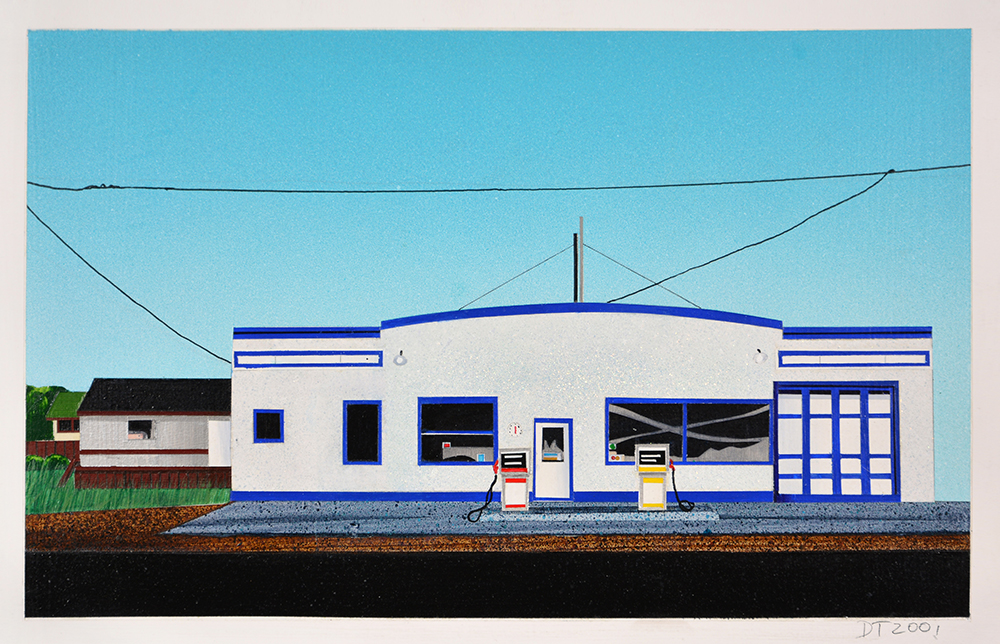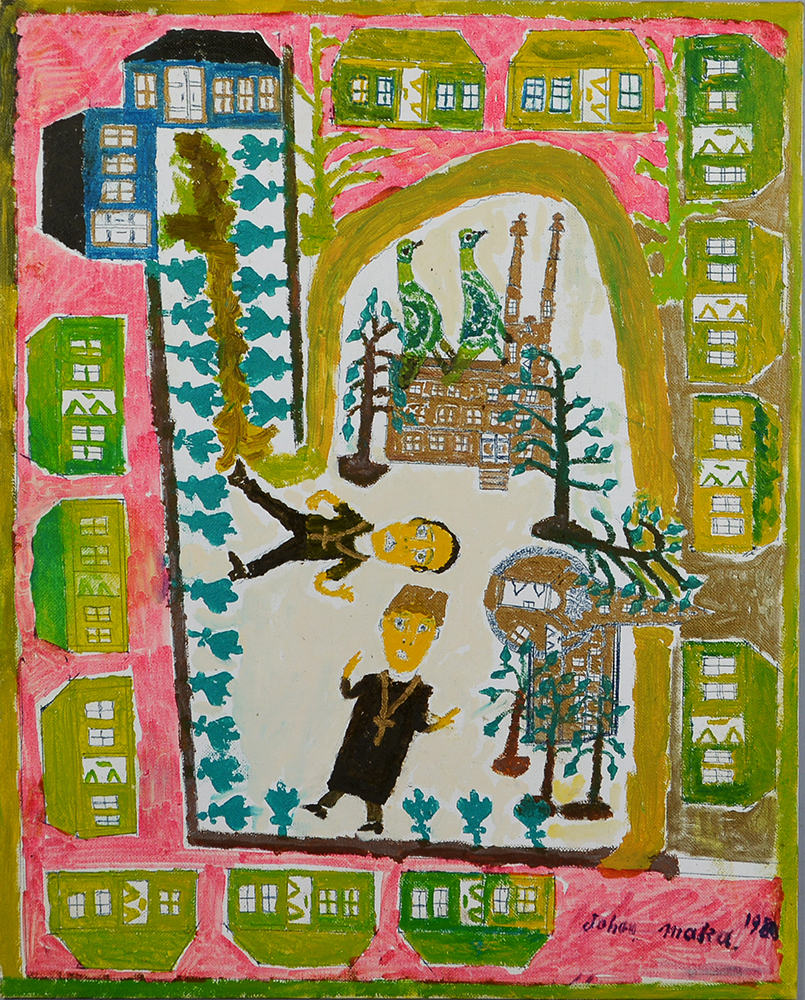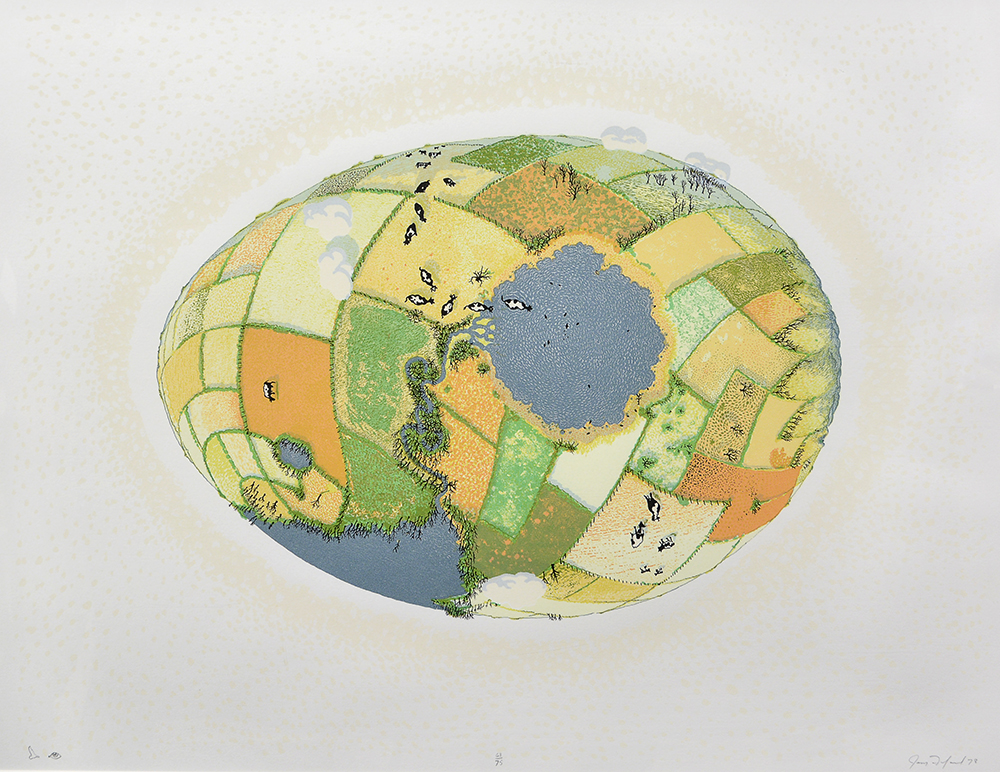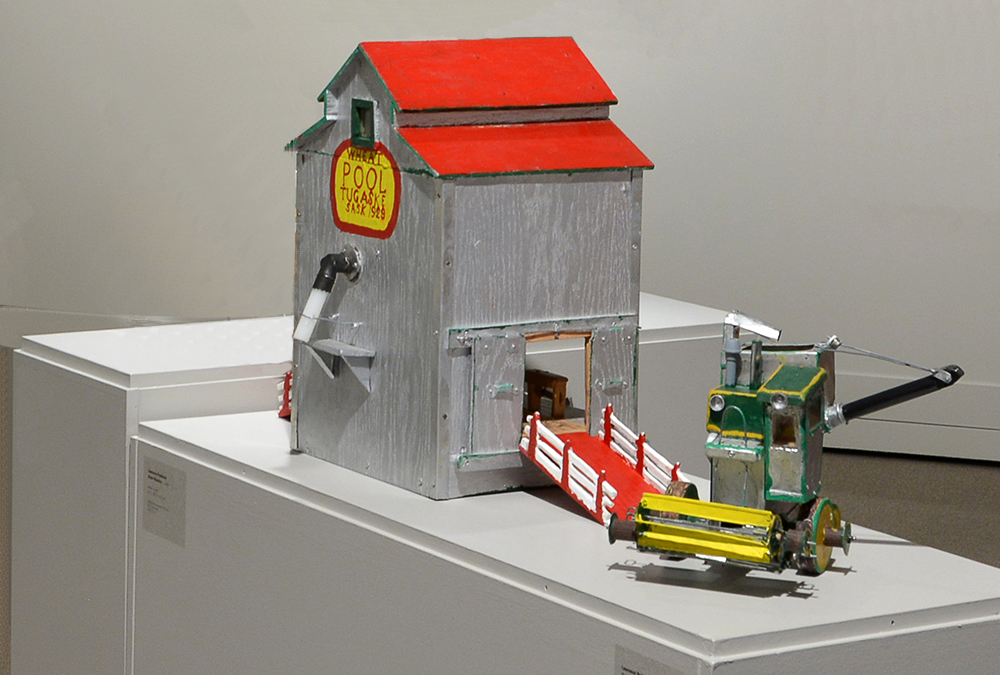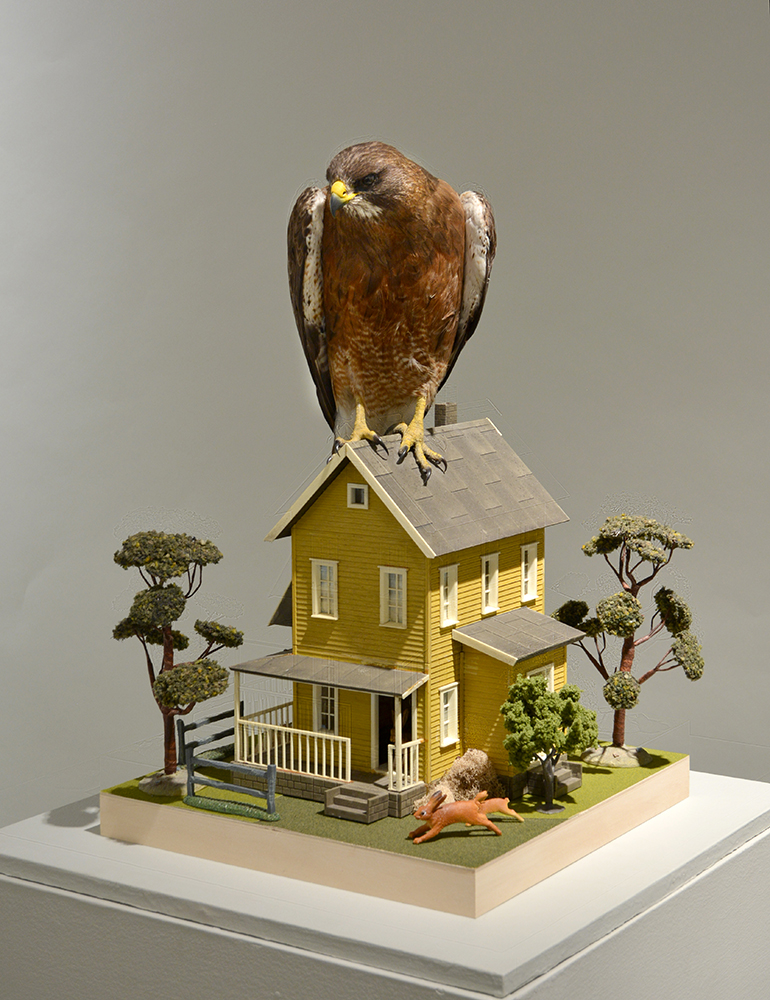A Vernacular Aesthetic
Vernacular or folk art is diverse in its subject matter, artistic approaches, and use of materials. Approaches to folk art vary, but commonly share some similar elements or qualities. These include simplified forms with heavy outlines, inconsistencies in scale and perspective, and the use of craft or found materials. Many contemporary artists incorporate these folk art techniques into their own work, blending traditional and modern approaches.
A key feature of vernacular art is the abstraction of imagery. Forms and figures simplified by using symbols, flat areas of color, and bold outlines. Molly Lenhardt’s painting, Canadian Ukrainian Girl, illustrates this approach. It presents a portrait with the subject’s face and body reduced to basic lines and shapes, and decorated with patterns. Lenhardt positions the figure prominently in the foreground, pressed against the picture plane. It gives the composition a flattened, two-dimensional effect.
Contemporary artist David Thauberger has adopted a similar technique, pushing subjects into the foreground and flattening them. In his painting Power Line, the architecture of a gas station is reduced to simple geometric shapes. It becomes a flattened, frontal view, devoid of three-dimensional perspective. Thauberger acknowledges the influence of vernacular artists like Lenhardt and William McCargar on his artistic approach.
Inconsistencies in scale and perspective are also common in vernacular art. Artists often depict objects and people in disproportionate sizes or use unconventional perspectives. In Jahan Maka’s painting Old World, for example, figures and buildings are shown from a bird’s-eye view. But some are oddly positioned on their sides, indicating different mapped locations in a neighborhood. This “wonky” aerial perspective gives the scene a dreamlike quality, as if the viewer is floating above. Contemporary artist Joe Fafard draws on this use of aerial perspective in his print Bird’s Eye. He presents a landscape from above in the shape of an egg. The print features fields and bodies of water dotted with cows. The cows are depicted from an unusual viewpoint, appearing as abstracted forms. This playful manipulation of perspective creates a unique visual experience.
Another tradition in vernacular art is the creation of miniature models. These are often used as toys or nostalgic mementos to capture memories of life on the Prairies. They recreate rural subjects, such as plows and teams of horses, thrashers, combines, and grain elevators at small scale. They are typically crafted from found or readily available materials. This practice, known as bricolage, involves using a mix of readily-available materials to construct a piece. Moose Jaw folk artist Lawrence Pederson, for example, created numerous miniature, toy-like replicas, including a grain elevator made from various materials.
Contemporary artist Graeme Patterson takes this practice further in his work The Shop, a large-scale miniature of a building from his grandparents’ hometown. Patterson uses lightweight materials such as foamcore. He incorporates sound and video to bring the building to life, encouraging viewers to explore its inner workings. Similarly, Leila Armstrong’s sculptures feature small dioramas of Prairie environments, incorporating taxidermy animals and toy-like figures. These dioramas, examples of bricolage, play with scale and encourage viewers to engage with the art in a playful, nostalgic way.
In these ways, vernacular and contemporary artists draw on shared approaches and techniques. They speak to Prairie life through their unique approaches to art.
See Bibliography for sources.


